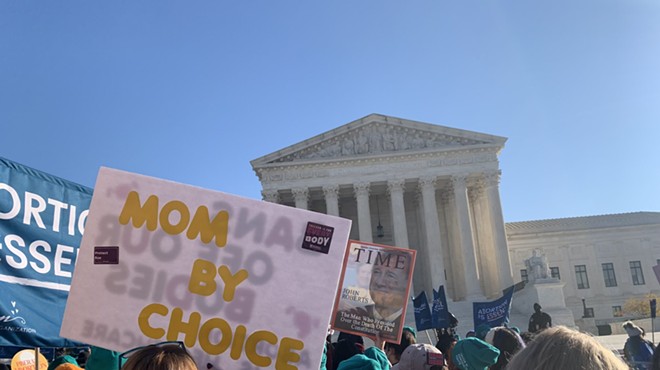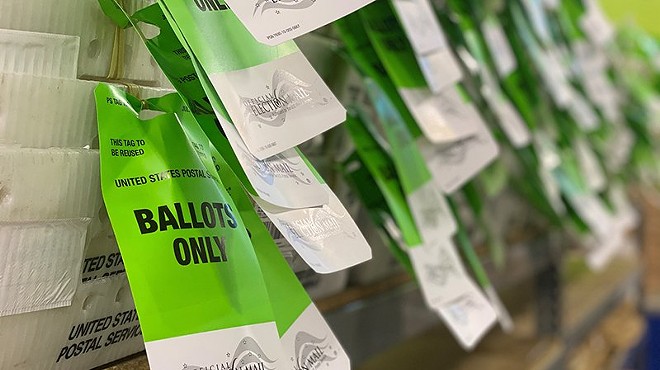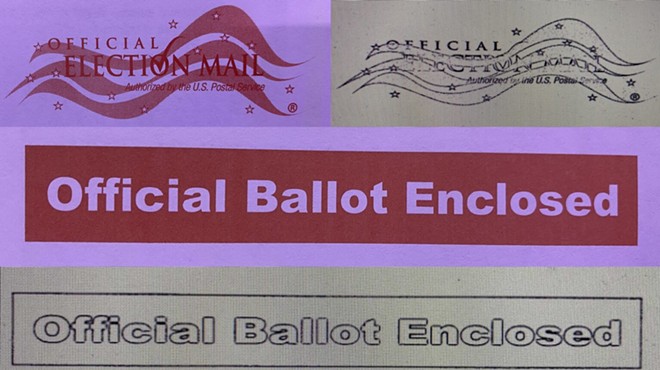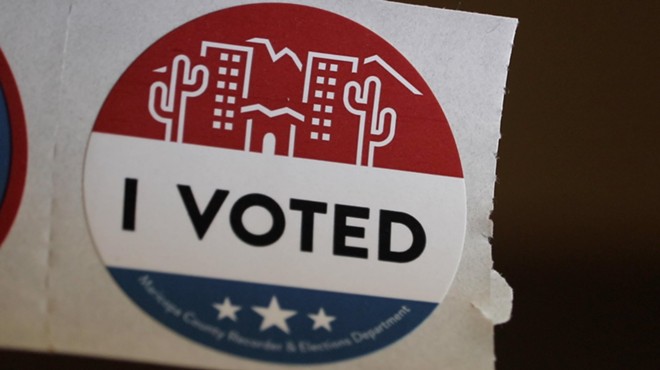Thursday, March 7, 2013
Understanding The State's Sales-Tax Reform: What's At Stake?
Bethany Barnes of Arizona-Sonora News Service brings us the latest on the complicated efforts to reform the state sales tax:
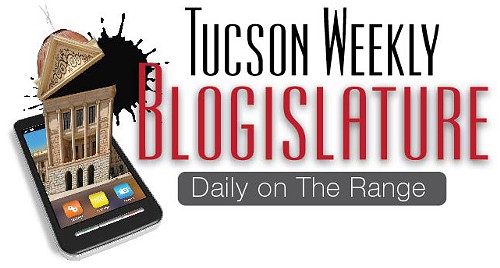
For a moment it looked like changing Arizona’s complex tax system, at least when it came to construction, might not be possible this legislative session.While everyone’s still holding cards close to their chest and talks are ongoing, Arizona lawmakers think they’re found a way to simplify taxes for contractors without leaving a gaping hole in every city’s budget.
In the original proposal Tucson estimated it would lose around $7 million, but now it looks like the city could end up making money off the latest plan — something the bill’s sponsor, Rep. Debbie Lesko, R-Glendale, said she is working on fixing.HB 2657 is Gov. Jan Brewer’s effort to simplify what many argue is the most complicated tax system in the country. The bill passed out of the House Ways and Means Committee unanimously but with many noting that something would need to be done about the bill’s harsh impact on cities.
What is TPT tax?
Arizona’s Transaction Privilege Tax, which is typically called the sales tax, is a tax on the privilege of doing business in Arizona. Right now, contractors don't pay taxes on materials when they buy them. Instead they pay taxes on materials when the job is complete by calculating that materials cost 65 percent of the total cost and then paying taxes on that 65 percent. Right now the biggest chunk of the tax, 6.6 percent, goes to the state and a smaller portion, in Tucson’s case 2 percent, goes back into the city. Under the current system, the town where the construction happened gets that local tax money.
This isn’t the first time the Legislature has tried to streamline the tax, but the Governor’s support seems to be helping the legislation move along despite the bill’s more contentious points.
Laying foundation for compromiseRep. John Kavanagh, R-Fountain Hills, called the latest effort at compromise a “major concession by the Governor’s office.” What’s in the works is to let the cities continue to charge a local tax on construction and have the state switch to charging materials at point of sale.
This would let the cities bring in revenue from construction, but get rid of the exemptions that often cause builders problems with audits, Kavanagh said.
The exemptions and loopholes can create confusion and can make auditing frustrating, said Mark Minter, the executive director of the Arizona Builder’s Alliance. The Department of Revenue looks for ways to undo the exemptions, Minter said, and often the contractor will end up having to pay taxes they should have charged the owner for — something they can’t do when they are being audited years after a project is finished.
This makes contractors a middle man with risk, Minter said. Ideally, they’d like to be middle men without risk—something that’s achievable if all tax is just paid at the point of sale.
Minter is wary of the latest proposal to keep a local construction tax and charge at point of sale for materials, he said, noting he would want to consult others on the plan, which isn’t in any written form yet according to lawmakers.
"It sounds needlessly complicated. Seems like we should just go one way or another," Minter said.
Minter expressed concern that having two levels of tax could mean that Arizona gets taken out of the running if a company is considering building in a few different locations.
While Minter still needs to see the plan, he noted that he wouldn’t want to switch to something more complicated.
"The current system often works very well," Minter said. "Our concern with the current system is sometimes it doesn't work well."
Spencer Kamps, vice president of the Home Builders Association of Central Arizona, said the association received the proposal on March 1 and is still digesting it and making sure the plan doesn’t make reform more difficult.
With the new system contractors would technically be paying taxes on materials twice. They would pay at point of sale and then pay the local tax on 65 percent of the job, which is estimated to be the cost of materials. They wouldn’t be paying more than they were though, Lesko said; she estimated that contractors would still save money, because the 65 percent is actually an overestimate. The true cost of materials is estimated at around 41 percent.So the biggest chunk of tax contractors were used to paying, the state’s 6.6 percent, would go down since they’d be paying taxes on that lower materials cost.
Kavanagh said that they may parlay down that 65 percent to 60 percent to help with the double taxation issue.
Ken Strobeck, the executive director of the Arizona League of Cities and Towns, remarked that the solution doesn’t seem simpler, if that was one of the goals.
The League is also still analyzing the proposal, noting that it’s an interesting idea.
There is some concern that cities with little retail and who see a lot of business from non-major projects, such as plumbing and air conditioning, might see a loss since the local construction tax would not apply to these businesses, Strobeck said. .Why is construction such a divisive issue?
Revenue on sales tax construction last year was $168 million. It’s unknown how much of that would be recouped from charging at the point of sale, Strobeck said.
If something isn’t changed for the cities and it is a full switch to just taxing the materials, it could mean big losses all around.Since what cities are used to charging for materials isn’t how much materials actually cost, there would be drop in revenue even if all materials were bought in town.
The plan is counting on the idea that those currently evading the tax will start to pay up either because it will be harder to skirt the law or because people won’t be too baffled by the system to pay.
Minter said in the construction business, everybody knows a story about someone who has a second home they built tax-free by using their exemption certificate.
The Department of Revenue estimates a 31 percent non-compliance rate.
Some remain skeptical about how accurate that number is and the League has asked for harder data. Cities are also concerned that getting around the law will still be possible.Greg Wilkinson, the city administrator for Yuma, said being on the border might encourage people to just drive materials across the border without reporting them.
The other issue with materials is that for some towns, particularly those in rural areas, it isn’t possible to recoup the money at point of sale because they don’t have stores where contractors could even buy materials.High-growth cities are particularly concerned about how everything will play out, said Gilbert Davidson, town manager of Marana, which is a high-growth city. The money gained from construction goes into a transportation fund and helps repair roads. High-growth communities need to make sure the money coming in grows with the their community, said Jim Stahle, town manager of Sahuarita.
Sahuarita, also a growing community, uses the money to replace $50,000 police vehicles, build parks, drainage structures and other “long-term, lasting items,” said Stahle.The way construction tax allows growth to pay for itself is a “godsend,” he said.
Still work to be done
While the construction tax is the biggest sticking point, there are also issues when it comes to how auditing will be done, Kavanagh said.
He wants to see those concerns sorted out before he hears the bill in the House Appropriations Committee, which he chairs.
Right now, the bill would have the Department of Revenue take over all auditing. The cities and House Democrats have questioned the Department of Revenue’s ability to take on the additional workload.
“There is an acknowledgment even among us conservatives that if they need more resources, they need more resources,” said Rep. J.D. Mesnard, R-Chandler. Mesnard said it is premature to fund those additional resources since the plan wouldn’t take effect until 2015 but that he thinks everyone would fund what was needed.
Vince Perez, deputy director of the Department of Revenue, said it is most likely the department would need additional resources and that it would be easier to answer what those would need to look like once the new policy is set.
Mesnard said another valid concern that he’s open to hearing solutions on is the worry that the Department of Revenue will only pay attention to the bigger audits, when smaller audits can make a big difference in small towns.
The city of Patagonia just decided to start doing its own audits when, “all of a sudden the state comes bullying in,” said David Teel, town manager of Patagonia. Under the bill Patagonia would not longer be able to do its own audits.
"Oh hell, [lawmakers] don't even know where Patagonia is unless somebody wants to come down for a vacation,” Teel said, noting that the town is understandably not on the Department of Revenue’s radar. The money the town is hoping audits will get recover is “peanuts” from a state perspective, but makes a significant difference for Patagonia, he said.
Perez said that if cities have concerns about a business that may not be on the department’s radar, the cities could always meet with the Department of Revenue to bring it to its attention.Stahle doesn’t buy that.
"I'm not at all convinced that DOR will listen to the smaller jurisdictions,” he said, noting that it is just common sense to go after big money in big towns.
But big money doesn’t always mean biggest impact, Stahle said, for small towns what seems like a little can sometimes mean more to a small town than a larger audit would mean to a bigger town.
For Tucson, which does its own auditing, having the state take over all auditing could mean job losses of about 25 people, maybe more, said Andrew Greenhill, assistant to the city manager of Tucson. There are a lot of variables to consider, though, and it is possible that the state would need to keep these jobs in Tucson to help with auditing, Greenhill said.
The other issue that needs finessing, Lesko said, is that cities with a lot of retail could come out ahead since they would be getting money from retail and from the local construction tax. She wants to make sure the cities are made whole, not whole and then some, she said.
Kavanagh said the goal is to alter the formula for how shared revenue is distributed to factor in construction as well as population. Right now, population determines the 5 percent of TPT tax that goes into a pool of money that is split between the cities. Cities will also get a larger chunk of the shared revenue money, since 20 percent is shared for contracting but 40 percent is shared when it comes to retail.
Rep. Lesko said she is meeting again with the League of Cities and Towns on Friday, so it seems a deal could be struck in the near future.







